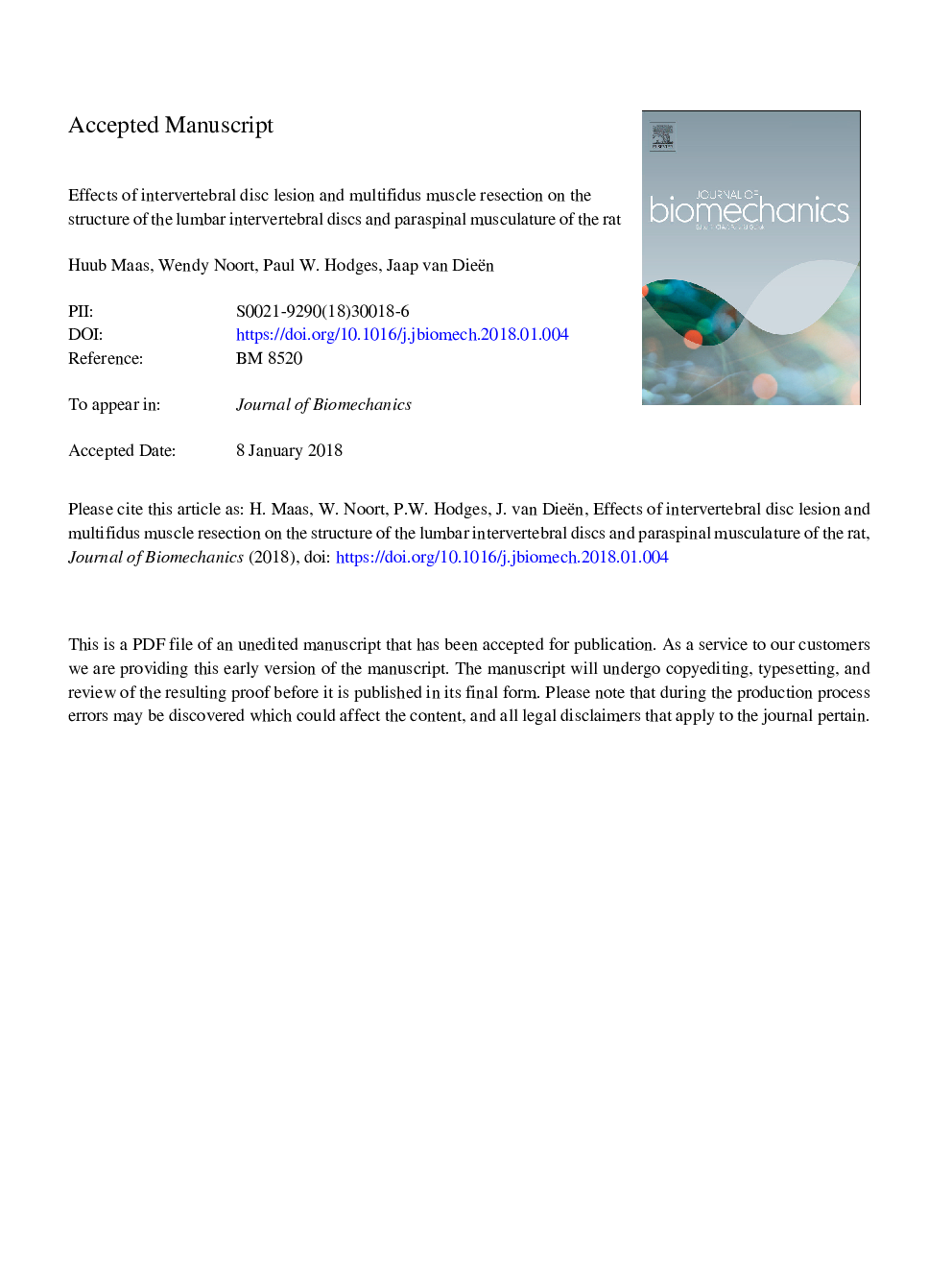| Article ID | Journal | Published Year | Pages | File Type |
|---|---|---|---|---|
| 7236538 | Journal of Biomechanics | 2018 | 22 Pages |
Abstract
The aim of this study was to investigate whether elimination of multifidus muscle in rats causes intervertebral disc (IVD) degeneration similar to that found after IVD lesion. Data were obtained from 36 male Wistar rats randomly assigned to one of three groups: (i) IVD lesion, in which the L4/L5 IVD was stabbed; (ii) multifidus muscle resection, in which all multifidus tissue between L3 and L6 was excised bilaterally; (iii) control, in which no intervention was applied. At 7, 14, and 28â¯days post-intervention, L4/L5 IVDs were harvested for histological analysis; left and right multifidus fascicles between L3 and S1 (from control and IVD lesion animals) and medial longissimus between L1 and S3 (from all animals) were dissected and weighed. ANOVA indicated significant group differences and a significant interaction between group and days for relative nucleus pulposus area and for multifidus mass normalized to body mass. No significant effects were observed for whole IVD area. At 14â¯days post-op, the IVD lesion group had a significantly smaller relative nucleus pulposus area than control and multifidus resection groups. Nucleus pulposus size did not differ from control at 7 and 28â¯days. At 7â¯days post-intervention, normalized multifidus mass was significantly lower (20%) in the IVD lesion group. For longissimus mass, no between-group differences were found. These results indicate that, in rats, IVD recovers quickly after lumbar IVD lesion and multifidus disruption does not cause IVD degeneration within the time studied.
Related Topics
Physical Sciences and Engineering
Engineering
Biomedical Engineering
Authors
Huub Maas, Wendy Noort, Paul W. Hodges, Jaap van Dieën,
